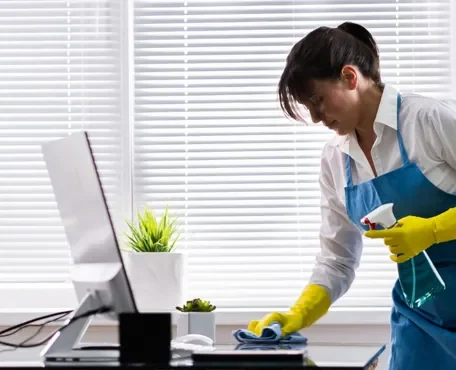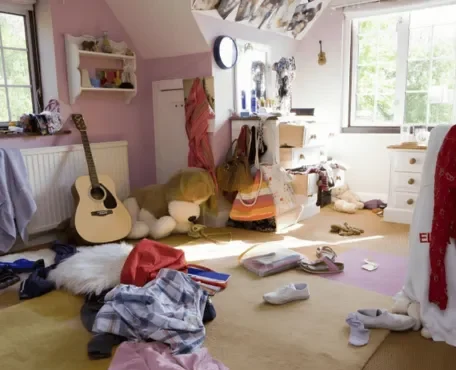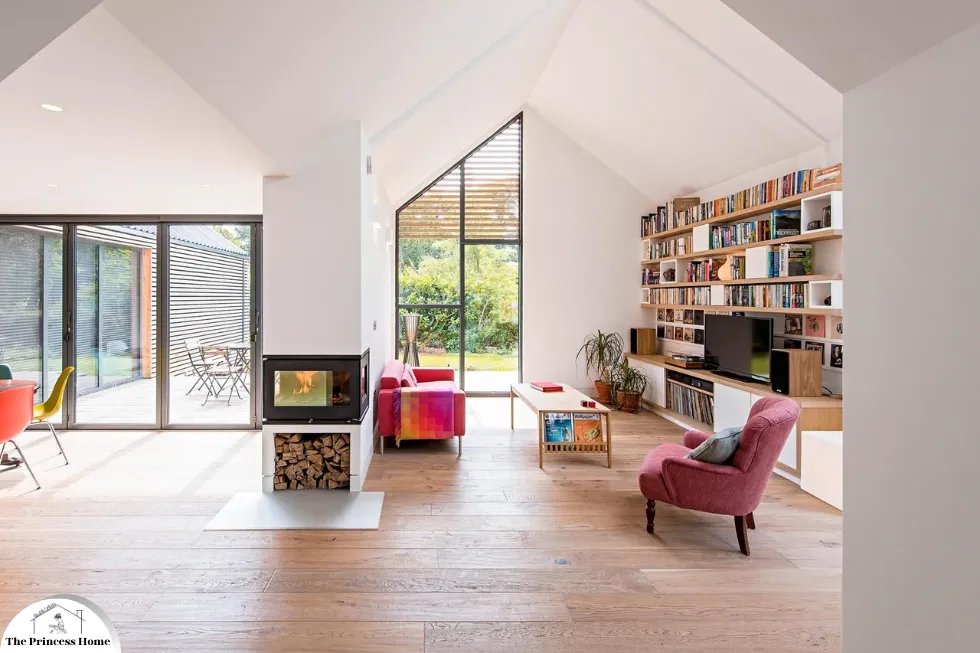
Maintaining an organized and clutter-free home can significantly improve your quality of life. A tidy living space promotes a sense of calm and reduces stress, making it easier to find what you need when you need it. If you’re overwhelmed by the idea of decluttering and organizing your house, fear not! In this article, we’ll explore a series of simple and effective ideas to help you get your home in order, one room at a time.
Organizing your house doesn’t have to be a daunting task. By following these simple ideas and breaking the process down into manageable steps, you can transform your living space into a clutter-free and organized oasis. The key is to stay consistent, maintain a decluttered mindset, and embrace a minimalist approach to living. With a little effort and dedication, you can enjoy the benefits of a tidy, stress-free home.
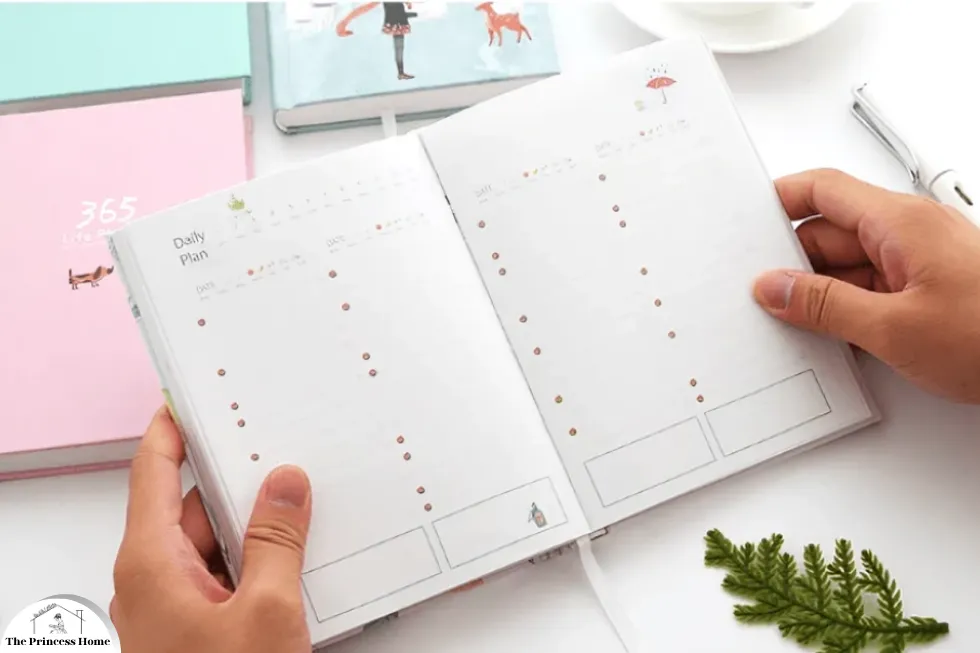
1.Start with a Plan
Before diving into the process of organizing your house, it’s essential to create a plan. This plan should include a list of rooms you want to tackle, specific goals for each room, and a realistic timeline. Breaking the process into smaller, manageable tasks will prevent you from feeling overwhelmed and help you stay on track. Starting with a plan is crucial when it comes to organizing your house.
Advice the professional home organizer, here’s a step-by-step guide to help you get started:
1.Assessment:
Walk through your home and assess which areas need the most attention. Make a list of all the rooms you want to organize, prioritizing based on urgency or personal preference.
2.Set Goals:
For each room on your list, establish specific goals. These could be anything from decluttering and creating more storage space to improving functionality and aesthetics.
3.Timeline:
Be realistic about how much time you can dedicate to organizing each room. Consider your schedule, commitments, and energy levels. Setting a timeline will help you allocate time effectively and stay focused.
4.Break it Down:
Break down each room into smaller tasks or areas to tackle. For example, if you’re organizing the kitchen, you might break it down into cabinets, pantry, countertops, and appliances. Breaking tasks into manageable chunks makes the process less daunting.
5.Prioritize:
Prioritize tasks within each room based on your goals and the level of clutter or disorganization. Start with areas that will have the most significant impact or those that are causing the most stress.
6.Gather Supplies:
Take inventory of the organizing supplies you’ll need, such as storage bins, labels, organizers, cleaning supplies, etc. Make a list and gather everything before you begin.
7.Allocate Resources:
Consider whether you’ll need any additional help, whether it’s from family members, friends, or professional organizers. Having support can make the process more efficient and enjoyable.
8.Stay Flexible:
Be prepared to adjust your plan as needed. Unexpected obstacles or distractions may arise, so it’s essential to remain flexible and adapt your approach accordingly.
By starting with a well-thought-out plan, you’ll set yourself up for success and make the organizing process much more manageable and rewarding.
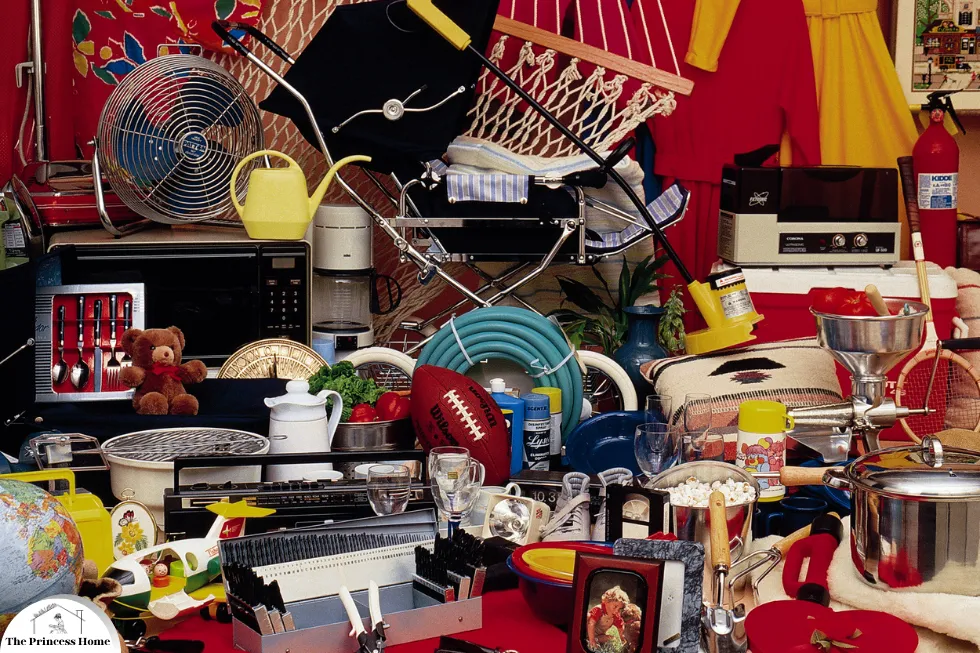
2.Declutter Ruthlessly
The first step in organizing your home is to declutter. This means getting rid of items you no longer need or use. To make this process easier, follow the “Three Box Method.” Get three boxes or bags and label them as follows: Keep, Donate/Sell, and Trash. As you go through each room, place items in the appropriate box. If you haven’t used or needed something in the past year, consider letting it go. Decluttering is a critical first step in the organizing process, and the “Three Box Method” can be incredibly effective.
Advice the professional home organizer, here’s a detailed guide on how to declutter ruthlessly :
1.Gather Your Supplies:
Collect three boxes or bags and label them as “Keep,” “Donate/Sell,” and “Trash.” Having designated containers for each category will streamline the decluttering process.
2.Start Small:
Begin decluttering one room or area at a time to avoid feeling overwhelmed. You can start with a small space like a closet or a drawer and gradually work your way through larger areas.
3.Set Criteria:
Establish clear criteria for what items you want to keep, donate/sell, or throw away. Ask yourself questions like, “Have I used this item in the past year?” or “Does this item serve a practical purpose or bring me joy?”
4.Be Ruthless:
As you go through each item, be honest with yourself about whether you truly need or love it. If you hesitate or struggle to justify keeping something, it’s likely time to let it go.
5.Keep, Donate/Sell, Trash:
Place each item into the corresponding box or bag based on your decision. Items that you use regularly and genuinely need should go in the “Keep” box. Items that are still in good condition but no longer serve you can be placed in the “Donate/Sell” box. Anything that is broken, expired, or no longer usable should be placed in the “Trash” box.
6.Avoid Second Guessing:
Once you’ve made a decision about an item, try not to second-guess yourself. Trust your instincts and focus on making progress rather than getting bogged down in indecision.
7.Repeat Room by Room:
Continue decluttering each room in your home, following the same process. Remember to tackle one area at a time and celebrate your progress along the way.
8.Dispose Responsibly:
Once you’ve finished decluttering, properly dispose of the items in the “Donate/Sell” and “Trash” boxes. Consider donating usable items to local charities or selling them online to recoup some of their value.
By decluttering ruthlessly using the Three Box Method, you’ll create a more organized and clutter-free environment in your home, making it easier to tackle the next steps in the organizing process.
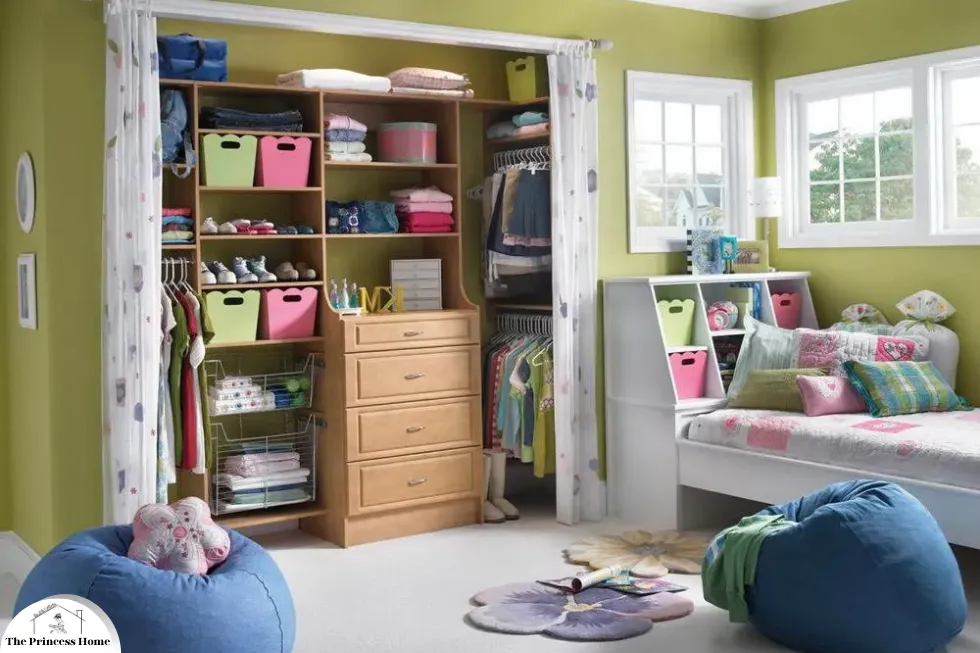
3.Organize Room by Room
Once you’ve decluttered, it’s time to start organizing room by room. Focus on one area at a time to avoid getting overwhelmed. Here are some room-specific tips:
a. Kitchen
- Utilize drawer dividers and cabinet organizers to keep utensils and cookware in order.
- Use clear containers for pantry items, so you can easily see what you have.
- Create designated zones for specific kitchen tasks, such as meal prep and baking.
b. Bedroom
- Invest in under-bed storage containers to maximize space.
- Use closet organizers to keep clothing and accessories tidy.
- Keep nightstands clutter-free by using trays to corral small items.
c. Living Room
- Install shelves to display books and decorative items.
- Use storage ottomans or coffee tables with hidden compartments to reduce clutter.
- Keep entertainment centers organized by bundling cables and using cable organizers.
d. Bathroom
- Use drawer dividers for makeup and grooming products.
- Install towel racks and hooks to keep towels and robes off the floor.
- Utilize over-the-toilet shelves for extra storage.
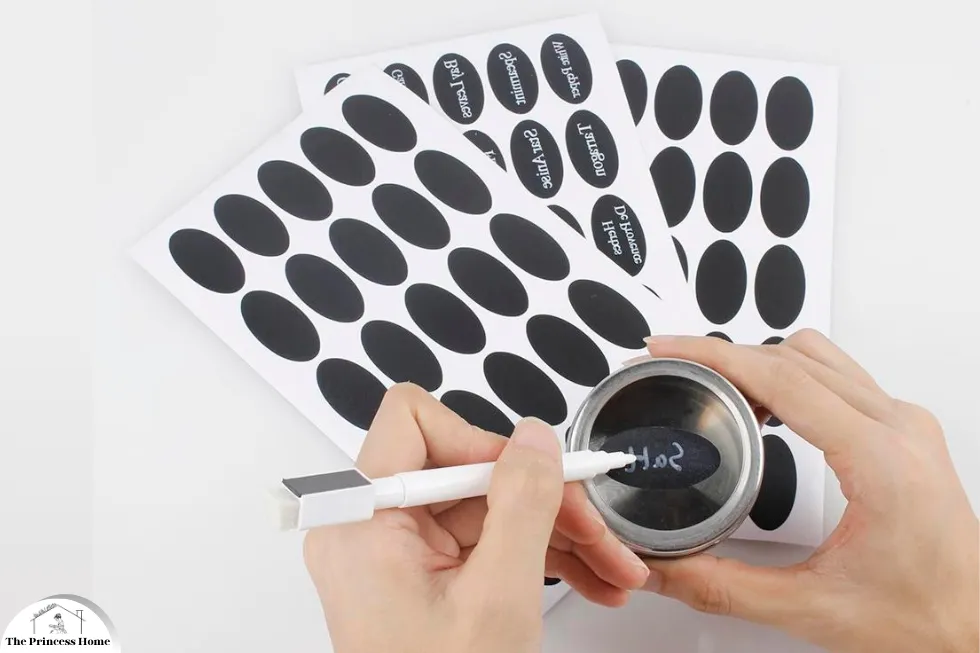
4.Label Everything
Labeling is a simple but effective way to maintain an organized home. Invest in a label maker or use adhesive labels to identify the contents of containers, boxes, and drawers. This not only makes it easy to find what you need but also helps others in your household maintain the organization. Labeling is indeed a game-changer when it comes to maintaining an organized home!
Advice the professional home organizer, here’s a guide on how to effectively label everything:
1.Invest in Supplies:
Purchase a label maker or adhesive labels in various sizes depending on your needs. You can find label makers that print on paper, plastic, or even magnetic tape, offering versatility for different surfaces and storage containers.
2.Choose Clear and Legible Labels:
Opt for labels that are clear, easy to read, and durable. Avoid using overly decorative fonts or colors that may be difficult to decipher. The goal is to make it effortless for anyone to understand what’s stored in each container or drawer.
3.Categorize and Prioritize:
Determine categories for labeling based on the contents of your storage spaces. Common categories include clothing, pantry items, office supplies, tools, toys, etc. Prioritize labeling the areas that are frequently accessed or have a lot of items stored.
4.Consistency is Key:
Maintain consistency in your labeling system throughout your home. Use the same format, font, and style for all labels to ensure coherence and ease of understanding.
5.Be Specific:
Provide detailed labels that accurately describe the contents of each container or space. For example, instead of simply labeling a box “Kitchen Supplies,” specify whether it contains baking tools, utensils, or spices.
6.Placement Matters:
Position labels prominently on the front or top of containers, boxes, or shelves, where they’re easily visible. Avoid placing labels in obscure locations or where they can be easily covered or obscured.
7.Update as Needed:
Regularly review and update your labels as your storage needs change. If you repurpose a container or rearrange your storage space, make sure to adjust the labels accordingly to reflect the new contents.
8.Involve Household Members:
Encourage everyone in your household to participate in labeling and maintaining the organization. Make it a collaborative effort by involving family members or roommates in the labeling process, ensuring everyone understands and respects the system.
By labeling everything in your home, you’ll streamline organization efforts, minimize confusion, and make it easier for everyone to locate and access items when needed.
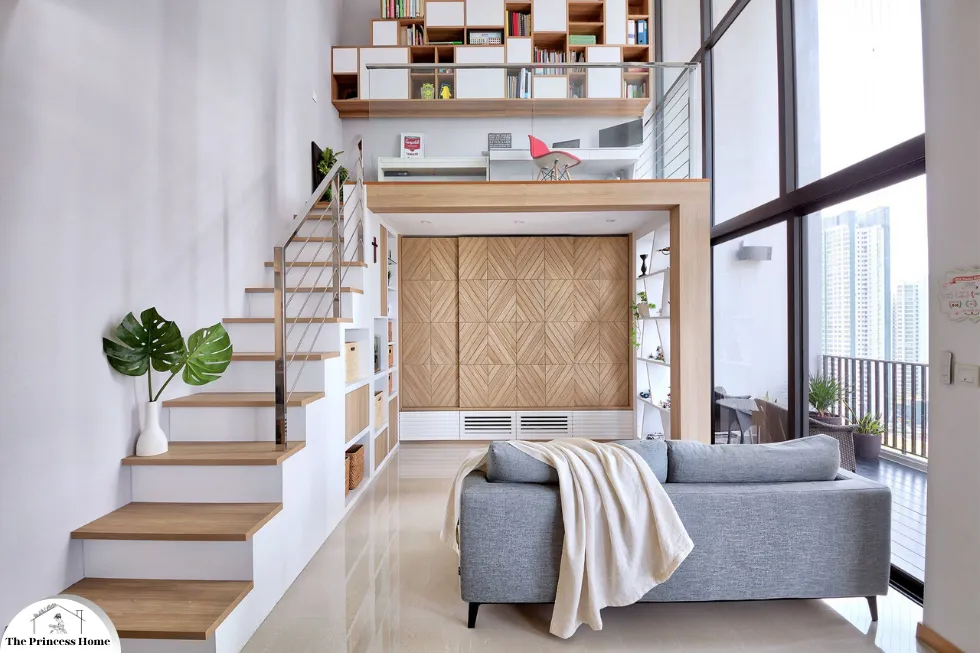
5.Utilize Vertical Space
In many homes, vertical space is underutilized. Install shelves, hooks, and pegboards on walls to create additional storage options. Vertical storage can be especially helpful in small spaces, such as bathrooms and kitchens, where every inch matters. Utilizing vertical space is a fantastic strategy to maximize storage and organization in any home.
Advice the professional home organizer, here’s how you can make the most of vertical space:
1.Install Shelves:
Adding shelves to your walls is one of the most effective ways to utilize vertical space. Install shelves above desks, countertops, or furniture to store books, decorative items, or essentials. Adjustable shelves allow for flexibility in accommodating items of various sizes.
2.Consider Floating Shelves:
Floating shelves are a sleek and space-saving option that creates a modern look while providing functional storage. They’re ideal for displaying decorative items, storing kitchen supplies, or organizing bathroom essentials.
3.Use Over-the-Door Organizers:
Over-the-door organizers are perfect for utilizing vertical space on closet or pantry doors. These organizers typically feature pockets or compartments, providing additional storage for shoes, accessories, cleaning supplies, or pantry items.
4.Hang Hooks and Pegboards:
Install hooks or pegboards on walls to hang items such as keys, hats, coats, bags, or kitchen utensils. This not only frees up valuable drawer or countertop space but also keeps frequently used items easily accessible.
5.Opt for Tall Furniture:
When selecting furniture pieces, choose taller options that maximize vertical space. Bookcases, armoires, and storage towers offer ample storage while minimizing the footprint on the floor.
6.Utilize Closet Space:
Make use of vertical space inside closets by installing shelving units, hanging organizers, or stacking bins. This allows you to efficiently store clothing, shoes, accessories, and other items while keeping them neatly organized and easily accessible.
7.Install Wall-Mounted Cabinets:
Wall-mounted cabinets are an excellent storage solution for kitchens, bathrooms, or laundry rooms. They provide additional storage space for items that you want to keep out of sight while freeing up floor space.
8.Optimize Garage or Basement Walls:
In areas like the garage or basement, install heavy-duty shelving units or wall-mounted storage systems to store tools, sports equipment, seasonal items, and other bulky belongings. This helps keep the floor clear and maximizes usable space.
By incorporating these vertical storage solutions into your home, you’ll effectively maximize space, reduce clutter, and create a more organized and functional living environment.
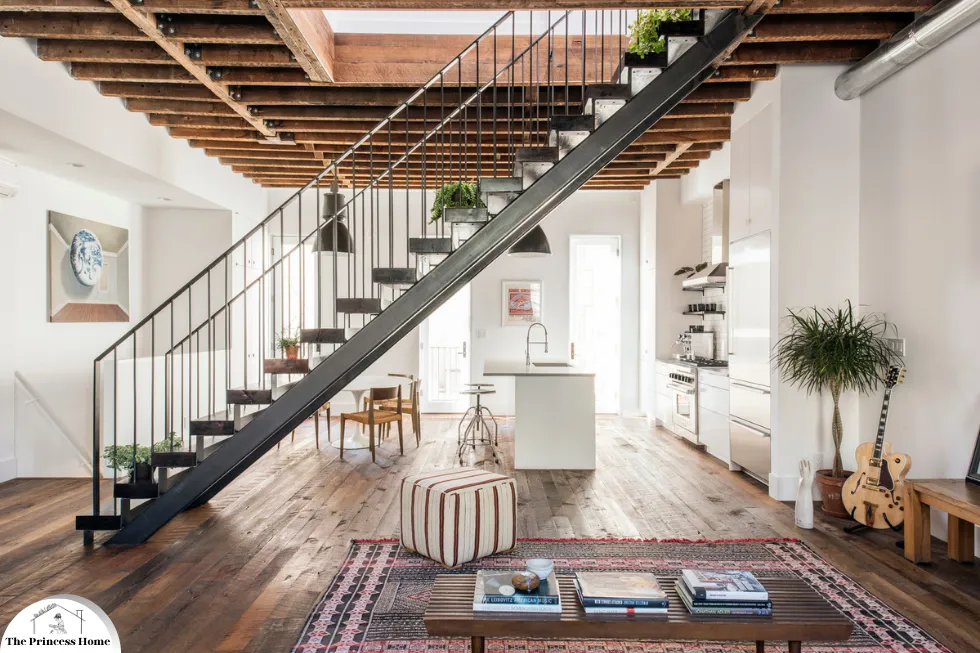
6.Embrace Minimalism
Minimalism is a lifestyle that emphasizes the idea of “less is more.” Embrace this philosophy by intentionally choosing to keep only the items that truly add value to your life. Declutter regularly and avoid impulse purchases to maintain a clutter-free and organized living space. Embracing minimalism can indeed transform both your living space and your mindset.
How you can incorporate minimalist principles into your life for a more organized and fulfilling environment:
1.Assess Your Belongings:
Take inventory of your possessions and evaluate each item’s significance and usefulness in your life. Ask yourself if each item brings you joy, serves a practical purpose, or holds sentimental value.
2.Declutter Mindfully:
Regularly declutter your living space by letting go of items that no longer serve you. Start with easy wins like old magazines, duplicate items, or things you haven’t used in months. Gradually work your way through more sentimental or challenging items.
3.Quality Over Quantity:
Prioritize quality over quantity when it comes to purchasing new items. Instead of accumulating numerous cheaply made items, invest in fewer high-quality pieces that will last longer and bring you more satisfaction.
4.Create Functional Spaces:
Design your living spaces with functionality and simplicity in mind. Keep surfaces clear of clutter, arrange furniture to optimize flow and usability, and designate specific areas for different activities to maintain a sense of order.
5.Mindful Consumption:
Practice mindful consumption by being intentional about what you bring into your home. Before making a purchase, consider whether the item aligns with your values, serves a genuine need, and contributes positively to your life.
6.Digital Minimalism:
Extend minimalism to your digital life by decluttering your digital devices, organizing files and apps, and limiting screen time. Unsubscribe from unnecessary email newsletters, delete unused apps, and curate your social media feeds to reduce digital overwhelm.
7.Simplify Your Wardrobe:
Streamline your wardrobe by curating a collection of versatile, high-quality clothing pieces that you love and wear regularly. Embrace a capsule wardrobe approach to reduce decision fatigue and simplify your daily routine.
8.Practice Gratitude:
Cultivate a mindset of gratitude by appreciating the things you have rather than constantly striving for more. Focus on experiences, relationships, and moments of joy rather than material possessions.
By embracing minimalism and intentionally curating your living space and lifestyle, you’ll not only create a more organized and clutter-free environment but also cultivate a greater sense of contentment, mindfulness, and fulfillment in your daily life.
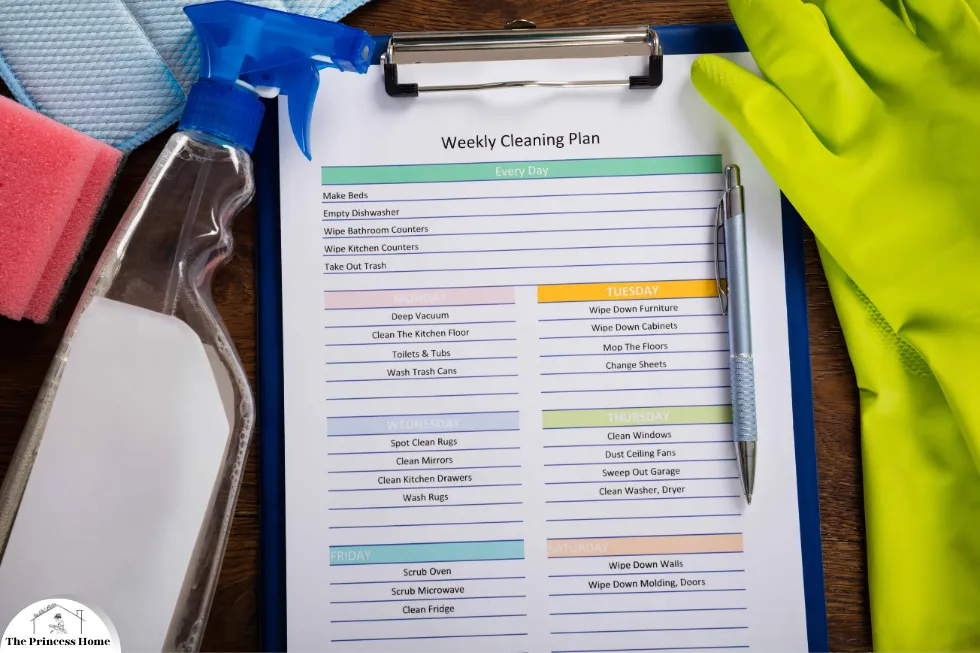
7.Create a Cleaning Schedule
An organized house is easier to maintain when it’s clean. Create a cleaning schedule that suits your lifestyle and keeps your home in tip-top shape. Regular cleaning and tidying sessions will prevent clutter from accumulating. Creating a cleaning schedule tailored to your lifestyle is key to maintaining an organized and tidy home.
Here’s a step-by-step guide to help you create an effective cleaning schedule:
1.Assess Your Needs:
Consider factors such as the size of your home, the number of occupants, your schedule, and any specific cleaning tasks that require regular attention (e.g., pet care, allergies, high-traffic areas).
2.Identify Cleaning Tasks:
Make a list of all the cleaning tasks that need to be done regularly to keep your home clean and organized. These may include vacuuming, dusting, mopping, laundry, bathroom cleaning, kitchen maintenance, and decluttering.
3.Divide Tasks by Frequency:
Determine how often each cleaning task needs to be performed. Some tasks, like vacuuming or doing laundry, may need to be done weekly, while others, like deep cleaning the oven or washing windows, may be done less frequently.
4.Create a Weekly Schedule:
Based on the frequency of each cleaning task, create a weekly cleaning schedule that outlines which tasks will be done on which days. Be realistic about how much time you can dedicate to cleaning each day and spread out the tasks accordingly.
5.Assign Specific Days:
Assign specific cleaning tasks to each day of the week, taking into account your schedule and preferences. For example, you might designate Mondays for vacuuming and dusting, Tuesdays for bathroom cleaning, Wednesdays for laundry, and so on.
6.Include Maintenance Tasks:
In addition to regular cleaning tasks, include maintenance tasks that help prevent clutter and maintain organization. This may include decluttering a specific area of your home each week or tackling organizing projects as needed.
7.Be Flexible:
Be prepared to adjust your cleaning schedule as needed based on changes in your schedule, unexpected events, or seasonal priorities. Flexibility is key to maintaining a sustainable cleaning routine.
8.Share Responsibilities:
If you share your living space with family members or roommates, involve them in the cleaning process by assigning tasks and responsibilities. This not only lightens the workload but also fosters a sense of shared responsibility and teamwork.
9.Set Reminders:
Use reminders or calendar alerts to help you stay on track with your cleaning schedule. Set aside dedicated time each day or week to tackle the tasks on your schedule and stick to it.
By creating a cleaning schedule that suits your lifestyle and preferences, you’ll be able to maintain an organized and tidy home with minimal effort and stress.
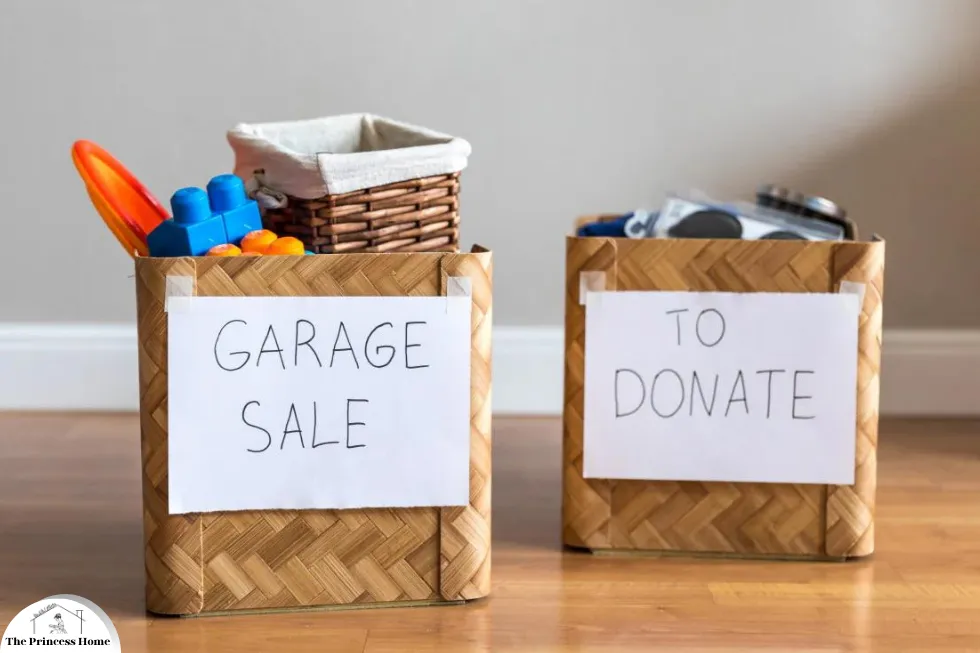
8.Donate or Sell Unwanted Items
Items you no longer need can find a new home with someone else. Consider donating gently used clothing, furniture, and household items to local charities or selling them through online platforms. Not only will you declutter your space, but you’ll also help others in need. Donating or selling unwanted items is a great way to declutter your home while also benefiting others.
Here’s how you can effectively donate or sell your unwanted items:
1.Assess Items:
Go through your belongings and identify items that you no longer need, use, or love. This may include clothing, furniture, kitchenware, electronics, books, toys, and other household items.
2.Sort and Organize:
Separate items into categories based on their condition and suitability for donation or sale. Set aside items that are in good condition and can be donated, as well as items that may have resale value.
3.Research Donation Options:
Research local charities, shelters, and organizations that accept donations of gently used items. Many organizations have specific guidelines or restrictions, so make sure to check their donation policies before dropping off items.
4.Prepare for Donation:
Clean and organize the items you plan to donate, ensuring they’re in good condition and ready to be passed on to someone else. Wash clothing, wipe down furniture, and package smaller items neatly.
5.Sell Online:
For items with resale value, consider selling them through online platforms such as eBay, Facebook Marketplace, Craigslist, or dedicated resale apps. Take clear photos, provide accurate descriptions, and set reasonable prices to attract potential buyers.
6.Host a Garage Sale:
If you have a large number of items to sell, consider hosting a garage sale or yard sale. This can be a great way to declutter quickly while also earning some extra cash.
7.Arrange for Pickup or Drop-off:
Depending on the donation or selling method you choose, arrange for pickup or drop-off of the items. Some charities offer pickup services for larger items, while others may require you to drop off donations at designated locations.
8.Document Donations for Tax Purposes:
If you’re donating items to a registered charity, remember to keep a record of your donations for tax purposes. Many charities provide donation receipts that you can use to claim tax deductions.
9.Follow Up:
After donating or selling your items, follow up to ensure they’ve been received and are being put to good use. Knowing that your unwanted items have found new homes can be incredibly rewarding.
By donating or selling unwanted items, you’ll not only free up space in your home and reduce clutter but also contribute to a more sustainable and compassionate community.
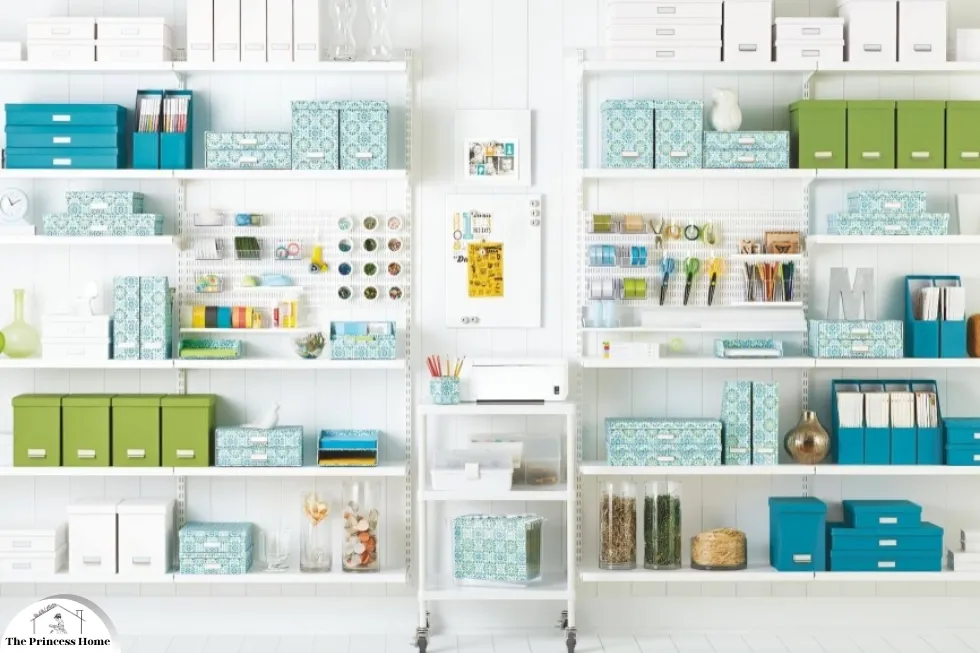
9Create a Home for Everything
Invest in Storage Solutions
One of the keys to successful organization is to ensure that every item in your home has a designated place. If you find that items are often left lying around because they don’t have a proper home, it’s time to create storage solutions for them.
Storage solutions can make a significant difference in your organization efforts. Investing in storage solutions is essential for maintaining an organized and clutter-free home.
The professional home organizer, here are some effective storage solutions to consider:
1.Closet Organizers:
Maximize closet space with organizers such as hanging shelves, shoe racks, dividers, and stackable bins. These help to neatly store clothing, shoes, accessories, and linens, making it easier to find items and keep your closet tidy.
2.Under-Bed Storage:
Utilize the space under your bed with under-bed storage containers or drawers. These are perfect for storing out-of-season clothing, extra bedding, shoes, or bulky items that are not frequently used.
3.Storage Ottomans and Benches:
Choose furniture pieces with built-in storage, such as ottomans with hidden compartments or benches with lift-up seats. These dual-purpose pieces provide extra seating and serve as discreet storage solutions for blankets, books, toys, or other items.
4.Modular Shelving Systems:
Install modular shelving systems in living areas, home offices, or garages to create customizable storage solutions. Adjustable shelves and cubbies allow you to adapt the storage space to your changing needs and preferences.
5.Kitchen Organizers:
Organize kitchen cabinets and drawers with dividers, pull-out shelves, spice racks, and pantry organizers. These help to maximize storage space, keep items easily accessible, and maintain order in your kitchen.
6.Drawer Organizers:
Keep drawers tidy and clutter-free with drawer organizers for utensils, office supplies, jewelry, cosmetics, or hobby materials. Choose organizers with adjustable compartments or customizable layouts to fit your specific needs.
7.Overhead Storage:
Install overhead storage racks or shelving units in garages, utility rooms, or closets to take advantage of vertical space. These are ideal for storing seasonal items, luggage, sporting equipment, or bulky items that are not frequently used.
8.Wall-Mounted Storage:
Mount hooks, pegboards, or rails on walls to hang items such as coats, hats, bags, tools, or kitchen utensils. Wall-mounted storage solutions help to free up floor space and keep frequently used items within easy reach.
9.Multifunctional Furniture:
Choose multifunctional furniture pieces that double as storage, such as storage beds, coffee tables with hidden compartments, or bookshelves with built-in storage bins. These maximize space in small living areas while providing additional storage options.
Investing in storage solutions tailored to your home’s layout, size, and specific storage needs helps you optimize space, reduce clutter, and maintain an organized environment throughout your home.

10.Rotate Seasonal Items
To maximize space and maintain an organized house, consider rotating seasonal items. For example, store winter clothes and gear during the summer and vice versa. This not only frees up space in your closets but also ensures you’re only accessing what you need at the moment. Rotating seasonal items is a fantastic strategy for maximizing space and keeping your home organized year-round.
Advice the professional home organizer, here’s how you can effectively rotate seasonal items:
1.Assess Seasonal Needs:
Take inventory of your seasonal items, including clothing, outerwear, sports gear, holiday decorations, and outdoor furniture. Determine which items are specific to certain seasons and when they’re typically used.
2.Divide Items by Season:
Sort your seasonal items into categories based on the season they’re used in. For example, separate winter clothing, holiday decorations, and cold-weather gear from summer clothing, outdoor equipment, and beach accessories.
3.Declutter and Purge:
As you sort through your seasonal items, take the opportunity to declutter and purge anything that is damaged, no longer fits, or no longer brings you joy. Donate or discard items that you no longer need or use.
4.Choose Storage Solutions:
Select appropriate storage containers or solutions for each category of seasonal items. Use clear plastic bins, garment bags, vacuum-sealed bags, or storage boxes to protect clothing and accessories from dust, moisture, and pests.
5.Label and Organize:
Clearly label each storage container with its contents and the season it belongs to. This makes it easy to identify and access specific items when you need them. Store similar items together and prioritize accessibility for frequently used items.
6.Rotate Seasonally:
As the seasons change, rotate your seasonal items accordingly. When transitioning from one season to another, retrieve the items you’ll need for the upcoming season and store away the items from the previous season.
7.Maximize Closet Space:
Take advantage of the extra space in your closets by storing off-season clothing and accessories in storage containers or garment bags. This frees up closet space for current-season items and keeps your wardrobe organized.
8.Utilize Vertical Storage:
Store seasonal items in unused spaces such as under the bed, in the attic, or on high shelves. Utilize vertical storage solutions like shelving units, hanging organizers, or hooks to maximize space in closets, garages, or utility rooms.
9.Regularly Review and Refresh:
Periodically review your seasonal items and assess whether they still meet your needs. Refresh your seasonal rotation by decluttering any items that are no longer useful or relevant and updating your storage solutions as needed.
By rotating seasonal items, you’ll optimize space in your home, reduce clutter, and ensure that you have easy access to the items you need, no matter the season.
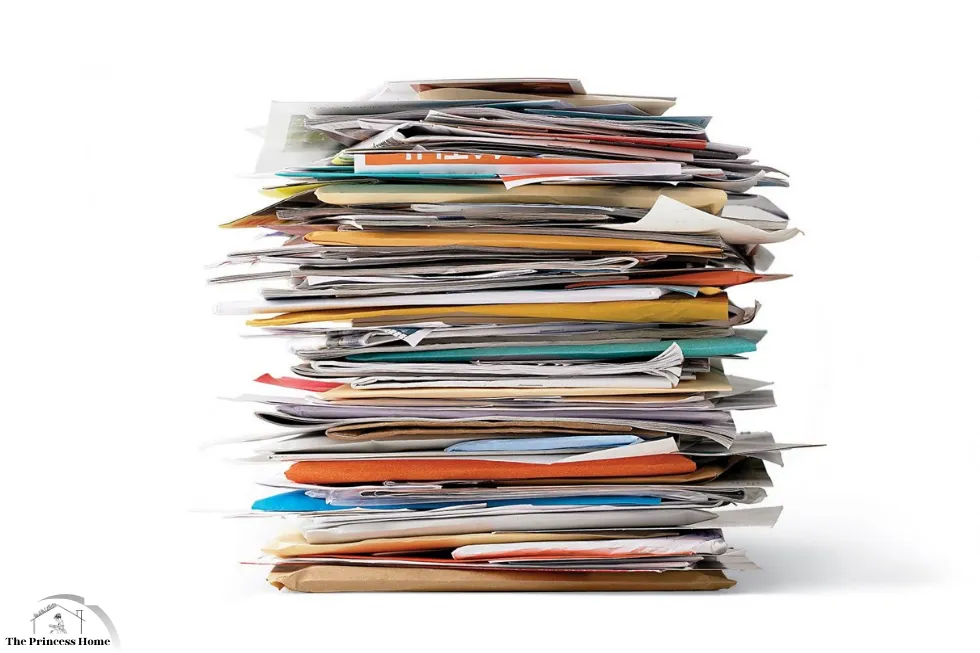
11.Organize Your Paperwork
Paper clutter can quickly overwhelm a home. Create a system for managing paperwork, including bills, important documents, and mail. Consider using labeled folders, a filing cabinet, or even going paperless whenever possible. Organizing paperwork is crucial for maintaining a clutter-free and organized home.
Here’s a step-by-step guide to help you create an effective system for managing your paperwork:
1.Gather Your Paperwork:
Collect all the paperwork scattered throughout your home, including bills, receipts, important documents, mail, and any other paper clutter.
2.Sort and Declutter:
Sort through your paperwork and declutter ruthlessly. Discard or shred any documents that are no longer needed, such as outdated bills, expired warranties, or irrelevant paperwork. Keep only essential documents that you need to reference or keep for legal or financial reasons.
3.Create Categories:
Organize your remaining paperwork into categories based on their type or purpose. Common categories include bills, financial documents, insurance papers, medical records, household documents, and personal records.
4.Invest in Filing Supplies:
Purchase labeled folders, a filing cabinet, or storage boxes to store and organize your paperwork. Choose a filing system that suits your needs and preferences, whether it’s alphabetical, chronological, or based on specific categories.
5.Label Folders and Containers:
Clearly label each folder or container with the name of the category it represents. Use a label maker or adhesive labels to ensure that labels are legible and durable.
6.Establish a Filing System:
Develop a filing system that works for you and your household. Decide where you’ll keep your filing system, whether it’s in a dedicated filing cabinet, a desk drawer, or a designated area in your home office.
7.Sort and File Regularly:
Make it a habit to sort and file incoming paperwork regularly. Set aside time each week or month to go through new documents, file them appropriately, and discard any unnecessary paperwork.
8.Go Paperless Whenever Possible:
Whenever possible, opt for paperless billing and statements to reduce the amount of physical paperwork entering your home. Set up online accounts with service providers and financial institutions to receive bills and statements electronically.
9.Create a Mail Sorting System:
Establish a system for managing incoming mail to prevent it from piling up. Designate a specific area for incoming mail and sort it immediately into categories such as bills to pay, documents to file, and junk mail to discard.
10.Stay Organized Digitally:
Organize digital documents and files on your computer or cloud storage using a similar categorization system. Create folders and subfolders to store digital copies of important paperwork, making it easy to access and manage.
By implementing these strategies, you’ll create an organized and efficient system for managing your paperwork, reducing clutter, and ensuring that important documents are easily accessible when needed.
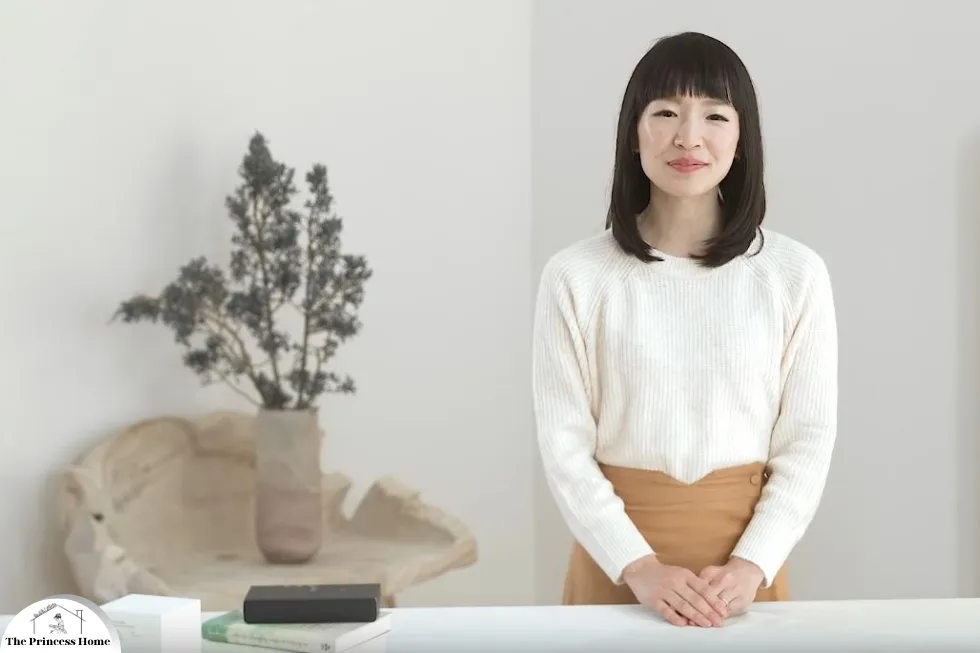
12.Utilize the KonMari Method
Made famous by Marie Kondo, the KonMari Method is a systematic approach to decluttering and organizing. The core principle is to keep only items that “spark joy.” By applying this method, you can simplify your possessions and create a more joyful living environment.
How you can utilize the KonMari Method to simplify your possessions and create a more joyful living environment:
1.Commit to Tidying Up:
Embrace the mindset of decluttering and commit to tidying up your home thoroughly. Dedicate focused time and energy to the process, and approach it with a positive and open mindset.
2.Visualize Your Ideal Lifestyle:
Before starting the decluttering process, take a moment to visualize your ideal lifestyle and living environment. Envision how you want your home to look and feel, and use this vision as inspiration throughout the process.
3.Declutter by Category, Not Location:
Instead of tackling one room at a time, declutter by category (e.g., clothing, books, papers, miscellaneous items, sentimental items). Gather all items from each category in one place to assess the full extent of your belongings.
4.Hold Each Item and Ask “Does it Spark Joy?”:
Pick up each item individually and ask yourself if it sparks joy. Consider the emotional connection and positive feelings the item brings you. If it doesn’t spark joy, thank the item for its service and let it go.
5.Discard Before Organizing:
Focus on discarding first before thinking about storage or organization. Letting go of items that no longer serve you frees up physical and mental space for the things that truly matter.
6.Fold Clothes Vertically:
Use Marie Kondo’s folding method to fold clothes vertically and store them in drawers. This maximizes space, allows for easy visibility of each item, and prevents clothes from becoming wrinkled or forgotten at the bottom of a pile.
7.Designate a Home for Each Item:
Assign a specific home for each item based on its category and frequency of use. Store items in a way that makes them easily accessible and encourages mindful use and appreciation.
8.Express Gratitude:
Throughout the decluttering process, express gratitude for each item, whether you choose to keep it or let it go. Cultivating a sense of gratitude can enhance your connection with your belongings and reinforce the joy they bring you.
9.Maintain the Joy:
After decluttering and organizing, make a commitment to maintain the joy and order in your home. Regularly assess your belongings, discard items that no longer spark joy, and continue to surround yourself with things that bring you happiness.
By applying the KonMari Method, you can simplify your possessions, cultivate a deeper appreciation for the items you own, and create a living environment that truly sparks joy.

13.Digitize Your Media
Reduce clutter by digitizing CDs, DVDs, and old photos. This not only saves space but also makes your media collection more accessible. You can use cloud storage or external hard drives to store digital copies.
Digitizing your media collection is an excellent way to reduce clutter, save space, and make your media more accessible.
Here’s how you can digitize CDs, DVDs, and old photos:
1.Gather Your Media:
Collect all the CDs, DVDs, and printed photos you want to digitize. Sort them into categories to make the digitization process more efficient.
2.Choose a Digitization Method:
Decide how you want to digitize your media. There are several options available:
1.CDs and DVDs:
Use a computer with a built-in CD/DVD drive or an external optical drive to rip the contents of your CDs and DVDs onto your computer. You can use software like iTunes or Windows Media Player to import CDs and Hand Brake or VLC media player to rip DVDs.
2.Photos:
Use a scanner to scan printed photos and convert them into digital files. Many printers come with built-in scanners, or you can use standalone flatbed or sheet-fed scanners. Alternatively, you can use a smartphone app that allows you to scan photos directly using your phone’s camera.
3.Organize and Label Digital Files:
Create folders on your computer or external hard drive to organize your digital files. Label each folder based on the content or category of the media (e.g., Music, Movies, Photos). This will make it easier to locate files when you want to access them later.
4.Backup Your Digital Files:
Once you’ve digitized your media collection, make sure to back up your digital files to prevent loss in case of hardware failure or other unforeseen events. You can use cloud storage services like Google Drive, Dropbox, or iCloud, or you can store backups on external hard drives or USB flash drives.
5.Dispose of Physical Media:
After digitizing your media, consider what to do with the physical copies. You can donate them to charity, sell them online or at a garage sale, or recycle them if they’re no longer usable.
6.Enjoy Your Digital Collection:
Now that your media collection is digitized, you can enjoy it on various devices such as computers, smartphones, tablets, smart TVs, and media players. You can also easily share your digital files with friends and family members.
By digitizing your media collection, you’ll free up physical space in your home, protect your media from damage or loss, and make it more convenient to access and enjoy your favorite music, movies, and photos.
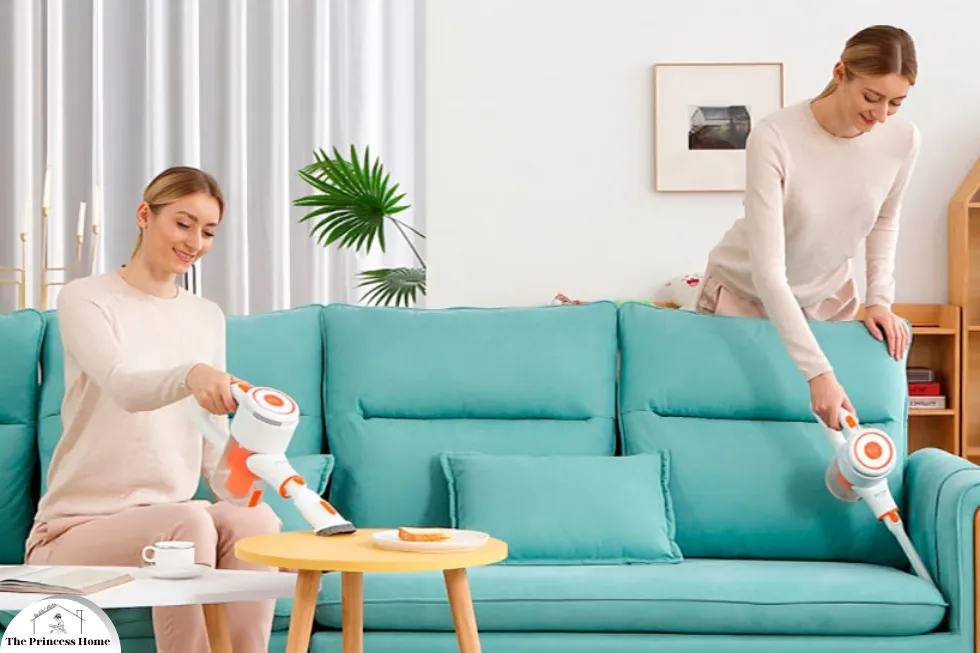
14.Maintain Your Organization
Once you’ve organized your house, maintaining that organization is key. Create daily and weekly habits to tidy up and put things back in their designated places. Regularly go through items to ensure you’re not accumulating unnecessary clutter. Maintaining organization is essential for a clutter-free and functional living space.
Here are some habits you can adopt to keep your home organized on a daily and weekly basis:
1.Daily Habits:
1.Start and end your
Start and end your day with a quick tidy-up. Spend a few minutes in the morning and evening tidying up common areas, putting away items that are out of place, and making your bed.
2.Establish a “one-touch” rule
Establish a “one-touch” rule for items you use throughout the day. Instead of setting things down wherever you happen to be, make a habit of putting them back in their designated places immediately after use.
3.Do a quick sweep
Do a quick sweep of high-traffic areas, such as the entryway, kitchen counters, and living room, to clear away clutter and ensure everything is in its place.
Take a few moments to address incoming mail and paperwork. Sort through mail, file important documents, and discard or recycle junk mail to prevent paper clutter from accumulating.
2.Weekly Habits:
1.Set aside time each week
Set aside time each week for a deeper clean and organization session. Use this time to tackle tasks such as dusting, vacuuming, mopping, and cleaning bathrooms.
2.Review your calendar
Review your calendar and schedule any upcoming appointments, events, or tasks for the week ahead. This helps you stay organized and ensures that you’re prepared for what’s coming up.
3.Dedicate one day a week
Dedicate one day a week to decluttering a specific area of your home. Focus on areas that tend to accumulate clutter, such as closets, cabinets, or drawers, and purge any items you no longer need or use.
4.Rotate and refresh decorative
Rotate and refresh decorative items and seasonal decor to keep your home feeling fresh and inviting. Store away out-of-season items and bring out new ones as needed.
3.Monthly & Seasonal Habits:
1.Take time each month
Take time each month to review your organizational systems and make any necessary adjustments. Assess what’s working well and what needs improvement, and make tweaks as needed to optimize your systems.
2.Conduct a more thorough
Conduct a more thorough decluttering session on a monthly or seasonal basis to prevent clutter from accumulating. Focus on different areas of your home each time and purge any items that no longer serve a purpose.
3.Use the change of seasons
Use the change of seasons as an opportunity to reassess your belongings and make updates to your storage solutions and organizational systems as needed.
By incorporating these daily, weekly, monthly, and seasonal habits into your routine, you’ll be able to maintain the organization of your home and prevent clutter from taking over. Consistency is key, so make an effort to stick to your organizational habits to enjoy a clean, clutter-free living space year-round.
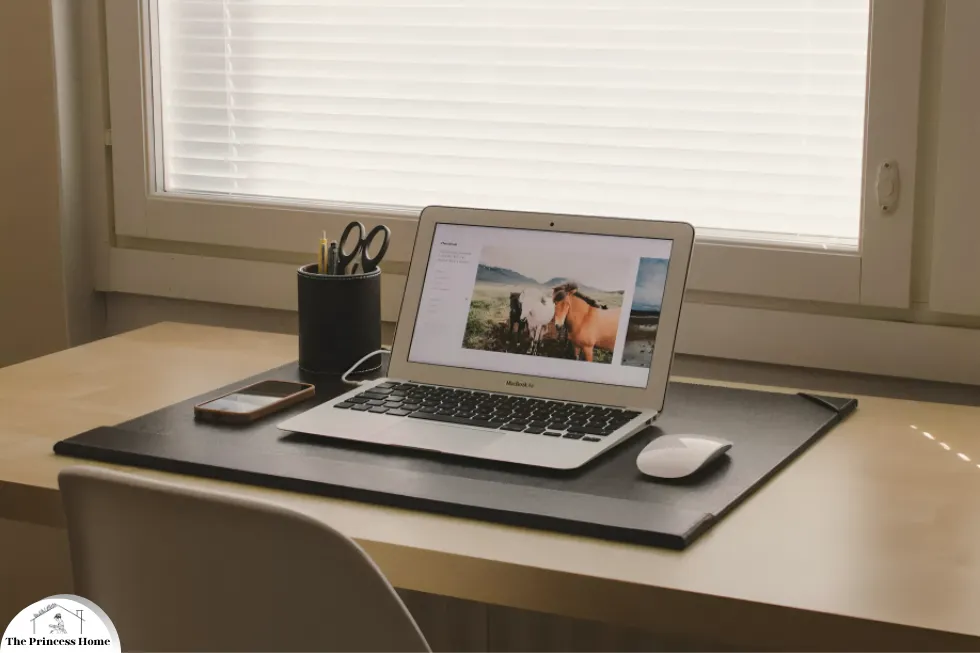
15.Declutter Your Digital Life
In today’s digital age, it’s not just physical clutter you need to tackle. Organize your digital life by decluttering your computer files, emails, and smartphone apps. Delete what you don’t need, organize your files into folders, and unsubscribe from email newsletters you no longer read. Decluttering your digital life is just as important as decluttering your physical space.
Here’s how you can tackle digital clutter and organize your computer files, emails, and smartphone apps:
1.Computer Files:
1.Start by organizing
Start by organizing your desktop. Remove any files or shortcuts that you don’t use regularly and organize the remaining items into folders.
2.Sort through your documents,
2.Sort through your documents, photos, and downloads folders. Delete any unnecessary files and organize the rest into folders based on categories or projects.
3.Use descriptive file names
Use descriptive file names and create a logical folder structure to make it easier to find and access files in the future.
4.Consider using cloud storage
Consider using cloud storage services like Google Drive, Dropbox, or iCloud to store and backup important files. This frees up space on your computer and ensures that your files are accessible from anywhere.
2.Emails:
1.Start by unsubscribing
Start by unsubscribing from email newsletters and notifications that you no longer read or find useful. Most newsletters have an unsubscribe link at the bottom of the email.
2.Create folders or labels
Create folders or labels in your email account to organize incoming emails. Sort emails into folders based on sender, subject, or importance.
3.Regularly delete or archive
Regularly delete or archive old emails that you no longer need. Use search filters to quickly find and delete emails that are older than a certain date or that match specific criteria.
4.Set up filters or rules
Set up filters or rules to automatically organize incoming emails into folders or apply labels. This can help you keep your inbox organized and reduce the time spent managing emails.
3.Smartphone Apps:
1.Review the apps installed
Review the apps installed on your smartphone and delete any that you no longer use or need. Unused apps take up storage space and can clutter your home screen.
2.Organize your apps
Organize your apps into folders based on categories such as productivity, entertainment, utilities, and social media. This makes it easier to find and access apps when you need them.
3.Consider using app management
Consider using app management tools or features built into your smartphone’s operating system to identify and remove apps that you haven’t used in a while.
4.Regularly update your apps
Regularly update your apps to ensure that you have the latest features and security patches. Delete outdated or redundant apps to keep your smartphone streamlined and efficient.
By decluttering your digital life, you’ll free up storage space, reduce distractions, and increase productivity. Plus, you’ll feel less overwhelmed by the constant influx of digital information and better able to focus on what’s important.
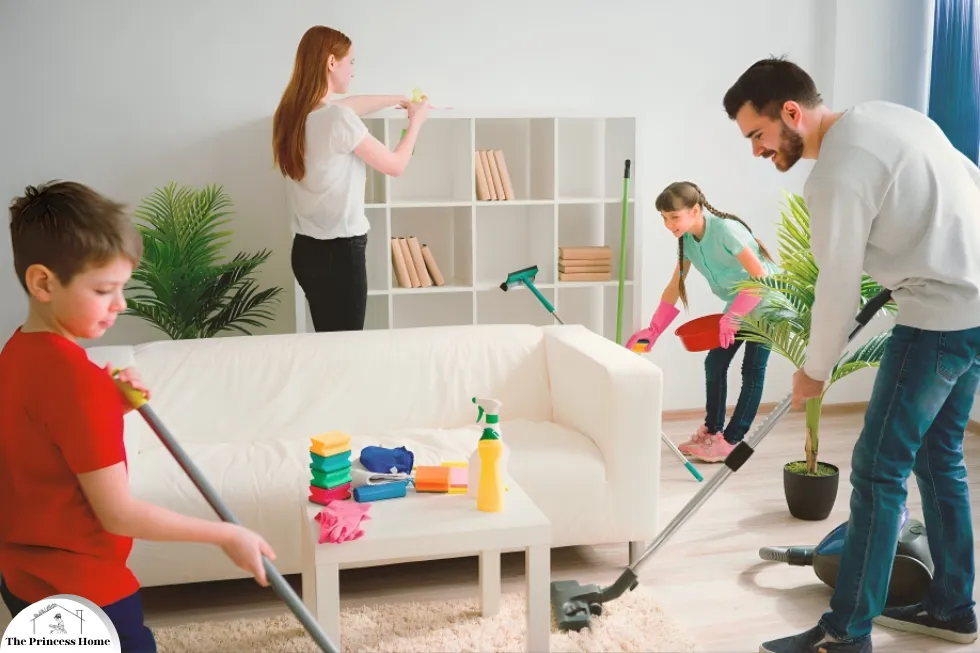
16.Get the Whole Family Involved
Organizing the house is a team effort, especially if you have a family. Involve everyone in the organization process and assign age-appropriate tasks. By working together, you can maintain a clutter-free and organized living space. Getting the whole family involved in organizing the house is a fantastic way to share the workload and instill a sense of responsibility and teamwork.
Here’s how you can involve everyone in the organization process and assign age-appropriate tasks:
1.Family Meeting:
Start by holding a family meeting to discuss the importance of organization and decluttering. Emphasize that maintaining a clean and organized home is a shared responsibility that benefits everyone.
2.Assign Tasks:
Divide household tasks among family members based on age, ability, and interest. Assign specific tasks such as tidying up common areas, decluttering bedrooms, doing laundry, washing dishes, or vacuuming.
3.Set Clear Expectations:
Clearly communicate expectations for each task, including how often it should be done and to what standard. Encourage family members to take ownership of their assigned tasks and follow through consistently.
4.Lead by Example:
Model good organizational habits and demonstrate the importance of tidiness and cleanliness in the home. When family members see you taking pride in maintaining a clutter-free environment, they’re more likely to follow suit.
5.Make it Fun:
Turn organization and cleaning into a fun and engaging activity for the whole family. Play upbeat music, set a timer for quick cleaning bursts, or offer rewards or incentives for completing tasks.
6.Rotate Responsibilities:
Rotate household chores regularly to give everyone a chance to participate in different tasks and develop a variety of skills. This prevents tasks from becoming monotonous and ensures that everyone shares the workload fairly.
7.Provide Support &Encouragement:
Offer guidance, support, and encouragement to family members as they tackle their assigned tasks. Recognize their efforts and praise them for a job well done, no matter how small the accomplishment.
8.Create a Chore Chart or Schedule:
Create a chore chart or schedule that outlines each family member’s responsibilities and the frequency of tasks. Display the chart in a visible location, such as the kitchen or family bulletin board, to keep everyone accountable.
9.Hold Regular Check-ins:
Schedule regular check-ins to review progress, address any challenges or concerns, and celebrate achievements. Use these check-ins as an opportunity to brainstorm solutions and make adjustments to the organization plan as needed.
By involving the whole family in the organization process and assigning age-appropriate tasks, you’ll create a sense of ownership and shared responsibility for maintaining a clutter-free and organized living space. Working together as a team not only lightens the workload but also strengthens family bonds and fosters a sense of pride in the home.
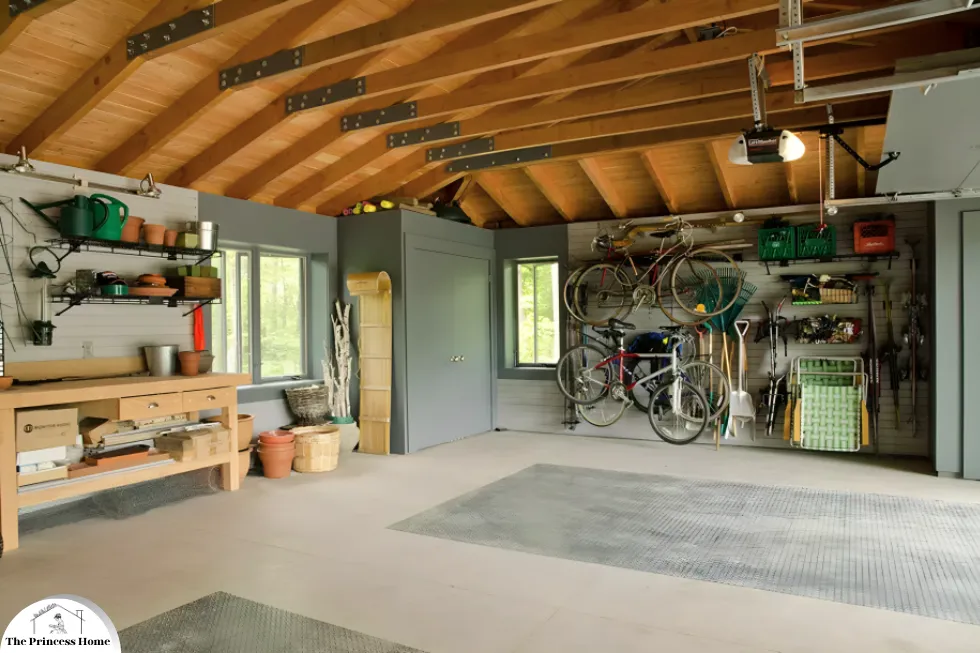
17.Don’t Neglect the Garage and Attic
The garage and attic are often overlooked areas when it comes to organizing. These spaces tend to become dumping grounds for items we no longer need. Tackle these spaces just like any other room in your house. Install shelves, hooks, and storage containers to keep everything in order. The garage and attic are often overlooked areas for organization, but they can greatly benefit from the same attention to detail as other parts of your home.
Advice the professional home organizer, Here’s how you can tackle these spaces effectively:
1.Declutter First:
Start by decluttering the garage and attic. Sort through items stored in these spaces and decide what to keep, donate, sell, or discard. Be ruthless in your decision-making and let go of items you no longer need or use.
2.Create Zones:
Divide the garage and attic into zones based on the types of items stored and their frequency of use. Common zones may include tools and equipment, seasonal decorations, sports gear, gardening supplies, and household overflow items.
3.Install Storage Solutions:
Maximize vertical space by installing shelves, racks, and overhead storage systems in the garage and attic. Utilize wall-mounted shelves, pegboards, and hooks to store frequently used items within easy reach. Consider sturdy shelving units for heavier items or bulk storage.
4.Use Clear Containers:
Store items in clear plastic bins or containers to easily see what’s inside without having to open each one. Label containers with their contents to make it easy to find and access items when needed.
5.Utilize Overhead Space:
Take advantage of overhead space in the garage and attic by installing ceiling-mounted racks or shelving systems. Use this space to store bulky or seasonal items that are not frequently accessed.
6.Keep Walkways Clear:
Maintain clear walkways and pathways in the garage and attic to ensure safe and easy access to stored items. Avoid blocking access to doors, windows, or electrical panels with stacked boxes or clutter.
7.Regular Maintenance:
Schedule regular maintenance sessions to keep the garage and attic organized and clutter-free. Set aside time every few months to review stored items, declutter as needed, and reorganize storage solutions as your needs change.
8.Secure Hazardous Items:
Store hazardous materials such as chemicals, paints, and pesticides in a designated area away from children and pets. Ensure that these items are stored securely in sealed containers and are easily identifiable.
9.Consider Climate Control:
If your garage or attic is susceptible to extreme temperatures or humidity, consider investing in climate control solutions such as insulation, ventilation, or dehumidifiers to protect stored items from damage.
By treating the garage and attic as integral parts of your home and implementing effective organization strategies, you can transform these spaces into functional and clutter-free storage areas that serve your needs efficiently.
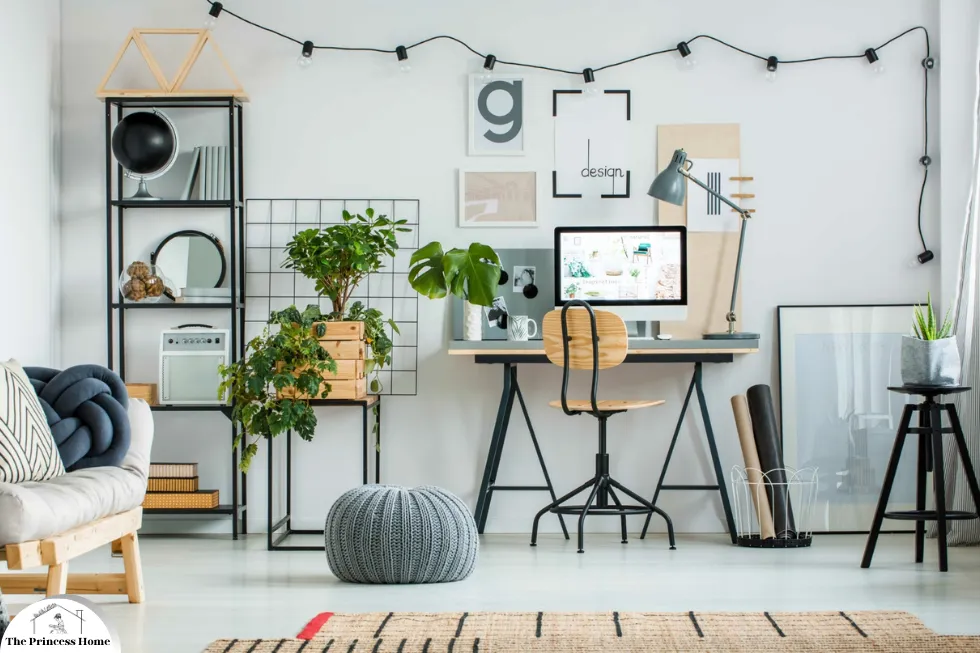
18.Personalize Your Organization
Your home is a reflection of your unique lifestyle and personality. While it’s essential to maintain a tidy and organized space, don’t forget to add personal touches to your decor. Use decorative baskets, colorful storage containers, and artwork to add a sense of style and character to your living areas. Personalizing your organization not only adds flair to your living space but also makes it feel more inviting and reflective of your personality.
Here are some ways you can personalize your organization:
1.Choose Decorative Storage Solutions:
Opt for storage containers, baskets, and bins that not only serve a functional purpose but also complement your decor style. Look for containers in colors, patterns, or materials that resonate with your personal aesthetic.
2.Add Artwork and Decor:
Incorporate artwork, photographs, and decorative items into your organization system to infuse personality into your space. Hang artwork on walls, display framed photos on shelves, or place decorative objects on tabletops and mantels.
3.Mix and Match Storage Accessories:
Experiment with mixing and matching different storage accessories to create visual interest and texture. Combine woven baskets with metal bins, or layer decorative boxes on open shelves for a dynamic look.
4.Use Color to Coordinate:
Coordinate the colors of your storage containers and accessories with the color scheme of your room. Choose hues that complement or contrast with your existing decor to create a cohesive and harmonious look.
5.Incorporate Personal Touches:
Infuse your organization system with personal touches that reflect your interests, hobbies, and memories. Incorporate items that hold sentimental value, such as family heirlooms, travel souvenirs, or handmade crafts.
6.Customize Labels and Tags:
Personalize labels and tags for your storage containers and shelves to add a touch of whimsy and personality. Use decorative fonts, colorful markers, or custom stickers to label items in a style that resonates with you.
7.DIY Projects and Upcycling:
Get creative with DIY projects and upcycling to personalize your organization system. Repurpose old furniture, crates, or containers into stylish storage solutions, or create your own artwork and decor pieces to showcase in your home.
8.Rotate Seasonal Decor:
Switch out seasonal decor and accessories to keep your space feeling fresh and updated throughout the year. Incorporate seasonal colors, textures, and motifs to celebrate holidays and change of seasons.
9.Express Your Personality:
Ultimately, let your personality shine through in your organization choices. Whether you prefer a minimalist aesthetic, eclectic mix of styles, or cozy and rustic vibe, infuse your space with elements that make you feel at home.
By personalizing your organization system with decorative touches and personal flair, you can create a home that not only looks organized but also feels uniquely yours. Let your creativity and personality guide your organizational choices to create a space that truly reflects who you are.
In conclusion, organizing your house is a continuous process that requires dedication and thoughtful planning. These simple ideas, combined with your commitment to maintaining an organized living space, will help you create a comfortable, clutter-free environment that you and your family can enjoy for years to come. Remember that the benefits of an organized home go beyond aesthetics; they lead to a happier and more stress-free lifestyle.
Here are some frequently asked questions related to organizing a house, along with their answers:
1. How can I stay motivated to organize my house?
Answer: Staying motivated to organize your house can be challenging, but it’s essential to keep your goals in mind. One effective approach is to break down the tasks into smaller, manageable steps and set achievable deadlines. Reward yourself after completing each task to maintain motivation. Additionally, reminding yourself of the benefits of a clutter-free and organized home, such as reduced stress and increased productivity, can be a powerful motivator.
2. What should I do with items I don’t want to keep but are still in good condition?
Answer: Items that are in good condition but no longer needed can be donated, sold, or gifted. Consider donating them to local charities or organizations that accept secondhand items. You can also sell them through online platforms like eBay, Facebook Marketplace, or at a garage sale. Gifting to friends and family is another way to ensure your unwanted items find a new home.
3. How can I prevent my home from becoming cluttered again after organizing it?
Answer: Preventing clutter from returning involves maintaining good habits. Regularly declutter by periodically going through your possessions and purging items you no longer need. Establish daily and weekly routines for tidying up. Also, be mindful of what you bring into your home. Avoid impulsive purchases and consider whether new items will genuinely add value to your life before acquiring them.
4. What are some eco-friendly ways to organize a house?
Answer: Eco-friendly organization methods can include using sustainable materials like bamboo or reclaimed wood for shelves and storage containers. Reuse and repurpose items whenever possible instead of buying new storage solutions. Consider secondhand and vintage furniture, which often have character and can be more environmentally friendly than new items. Finally, try to reduce plastic use by choosing glass or metal containers.
5. How do I organize sentimental items that I don’t want to part with?
Answer: Sentimental items can be challenging to organize, but they can be managed effectively. Create a dedicated storage area for sentimental items, such as a memory box or a specific shelf. Limit the number of sentimental items you keep to the most meaningful ones. Take photos of items you’re willing to part with and create a digital memory album. By preserving the memory without keeping the physical clutter, you can maintain a clutter-free home while still cherishing your sentimental items.
6. Should I hire a professional organizer to help me declutter and organize my house?
Answer: Hiring a professional organizer can be a great idea if you’re feeling overwhelmed, lack the time, or simply need expert guidance. Professional organizers can provide valuable insight, organization strategies, and a fresh perspective. They can tailor their approach to your specific needs and help you achieve your organization goals more efficiently.
7. What is the best time to start organizing my house?
Answer: The best time to start organizing your house is now! There’s no perfect time to begin, so don’t wait for a specific date or season. Start with a plan, as mentioned in the article, and tackle one room or area at a time. Consistency is key, and the sooner you start, the sooner you’ll enjoy the benefits of a well-organized home.



